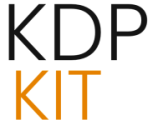
The Modern Self-Publishing Launch Blueprint Post-Digital Transformation
The trending book launch checklist for self-publishers in 2025 demonstrates a massive maturation of the indie process. We’ve moved light-years beyond simply uploading a file and hoping for the best. A successful launch now requires a meticulously planned, multi-stage operation that begins months before the actual publication date. It’s a strategic campaign, not a single event.
Foundational Platform Selection and Distribution Strategy
The very first strategic decision an author makes dictates their entire future visibility potential. You must commit to a distribution path, and that commitment must be made early.
The Choice: Exclusive vs. Wide:
This choice is foundational; it determines where you’ll focus your algorithmic mastery. Furthermore, every author must ensure their book’s digital fingerprint—its BISAC codes, categories, and keywords—are precisely configured to align with what their target audience is *actually* searching for. This foundational step is non-negotiable for any digital discovery.
The Non-Negotiable Role of Professional Editing and Polish. Find out more about navigating traditional publishing visibility hurdles.
The market’s increasing acceptance of self-publishing is entirely built upon the back of professional quality. In 2025, no credible launch checklist omits the necessity of robust editing. Amateur efforts are now flagged almost instantly by discerning readers.
Professional polish must include more than just a cursory proofread. Many successful authors are investing heavily in the following tiers of human critique:
Locking in an experienced editor months in advance is crucial; top professionals book out quickly, often months ahead. While automated tools like Grammarly or ProWritingAid are excellent for initial cleanup—and many authors use them for a first pass—the final investment in expert human critique is what separates a commercially viable book from an amateur effort. This directly impacts the quality of those crucial early reader reviews.
Pre-Launch Momentum: Building the Authorial Platform in Real Time
The time leading up to the release date is now viewed as the primary marketing deployment phase. Its entire purpose is to create measurable anticipation and gather essential social proof *before* the book officially hits the digital shelves. This proactive engagement builds the necessary initial velocity for platform algorithms to favor the new title when it launches.. Find out more about navigating traditional publishing visibility hurdles guide.
Cultivating an Engaged Digital Community Ahead of Release
Your social media presence cannot begin when the book is finished; it must commence well before the final chapter is even written. Authors are strongly advised to select one or two primary platforms where their core audience congregates and begin *consistent, authentic* engagement.
What does ‘authentic engagement’ look like in 2025?
As one commentator noted, while social media is great for getting noticed, the email list is what converts casual interest into a guaranteed sale when launch day arrives.
Strategic Use of Advance Review Copies and Endorsements
The acquisition of early, genuine reviews is perhaps the most vital pre-launch activity. This is where the ARC Team comes into play. You must assemble a dedicated group of readers—loyal fans from your email list, dedicated beta readers, or fellow authors—who receive Advanced Review Copies (ARCs).
The goal here is not solicitation of fake endorsements, but the securing of honest verdicts posted within a tight launch-day window—typically the first forty-eight hours. Why this tight window? Because platform algorithms are most heavily weighted by a title’s initial velocity. A sudden influx of reviews signals immediate relevance, pushing the book up the charts and into the “Also Bought” sections.
Actionable Takeaway for ARC Management:
Treat your ARC team like the VIPs they are. Send clear instructions on where to post (Amazon, Goodreads, BookBub) and when to post. A polite follow-up email on launch day with direct links to the review pages is a proven tactic for maximizing follow-through. This tactic builds credibility fast and kickstarts the algorithmic momentum for your book’s entire life cycle.
Furthermore, this proactive period is when authors should be pitching themselves for podcast appearances, guest blogging slots, and seeking endorsements from established figures in their genre. Leveraging external credibility is a powerful way to borrow visibility.
The Art of Presentation: Visual Branding and Discoverability Metadata
In a market saturated with millions of titles—with over 500,000 new self-published works released in the US alone in 2023, a number expected to climb further in 2025—the visual elements of a book and its accompanying digital data tags serve as the immediate, non-verbal pitch. These elements are often the deciding factor between a reader clicking to read more or simply scrolling past.
Cover Design as the Primary Commercial Signal
The book cover remains the single most important marketing asset you own. It demands uncompromising investment. Do not skimp here. An author must research current genre trends ruthlessly and find a designer who specializes in that specific aesthetic. The goal is a design that is one hundred percent aligned with market expectations for that genre.. Find out more about navigating traditional publishing visibility hurdles strategies.
A high-quality, professional cover signals two things to the prospective buyer:
For authors planning a series, this first cover establishes the enduring visual template that future installments will leverage for instant series recognition. Think of it as your visual ‘brand anchor’ for the next decade.
Mastering Search Engine Optimization Through Keywords and Categories
While the back cover blurb and the “Look Inside” preview are crucial sales copy requiring multiple rounds of revision, the technical metadata underpinning your book’s discoverability is arguably more important in the digital realm. This is where you meet the algorithm head-on.
The bedrock of this is the BISAC system. BISAC stands for Book Industry Standards and Communications, and it’s the universal language for classifying books by subject, used by retailers, libraries, and distributors alike. Getting these digital signifiers right requires diligent research.
Actionable Metadata Steps for 2025:. Find out more about Navigating traditional publishing visibility hurdles overview.
Correct categorization ensures your book lands in front of the right readers who are actively seeking that specific type of story, maximizing the return on every marketing dollar spent.
Post-Release Sustainability and The Hybrid Convergence
A successful launch is only the moment of ignition; the long-term health of an author’s career depends on maintaining visibility and evolving the strategy. The market now rewards endurance, not just the initial splash.
Sustaining Marketing Efforts Beyond the Initial Launch Window
That initial visibility spike generated by launch-day activity is ephemeral. It fades quickly. A sustainable career requires the author to transition immediately into longer-term marketing tactics. The notion that the best sales happen months or even years after release is entirely contingent upon this commitment to ongoing, strategic marketing.
Your post-launch marketing calendar should include:. Find out more about Modern self publishing launch blueprint 2025 definition guide.
Leveraging Independent Success to Influence Traditional Opportunities
The hybrid authorial career is not just a trend in 2025; it is arguably the most powerful trajectory available to a professional writer. Authors who have successfully established a dedicated following and proven sales velocity through self-publishing can leverage this data-backed success to gain stronger negotiating positions with traditional publishers for subsequent projects, or even to reclaim rights to backlist titles.
The independent success story provides the leverage—the tangible proof of marketability—that traditional houses now actively seek in their acquisition process. When you walk into a traditional negotiation, you are no longer presenting a manuscript and a hope; you are presenting a tested, proven business asset.
This dynamic negotiation marks the most significant evolution in the parallel ecosystems. It suggests a future where the paths are not just parallel, but occasionally, and advantageously, convergent. The data from your direct sales, your robust author brand engagement, and your consistent KDP performance give you the upper hand, allowing you to demand better terms and retain more creative authority based on your demonstrated ability to manage a book launch checklist effectively on your own terms.
Conclusion: The New Mandate for Visibility. Find out more about Mastering digital marketplace algorithms for book sales insights information.
Today, November 26, 2025, the core narrative remains clear: visibility is earned by mastering the digital gatekeepers while respecting the economic realities of the legacy systems. You cannot rely on either ecosystem to carry you alone. The independent author’s mandate is to become an agile, data-aware entrepreneur who produces quality work.
Key Takeaways for Immediate Action:
The days of waiting for the system to find you are over. The authors who are succeeding now are those who have taken control of their own visibility—engineering the algorithms, building the communities, and ensuring their exceptional stories are actually seen.
What is the single biggest technical hurdle you are currently facing in your book launch strategy? Share your thoughts in the comments below—let’s discuss how to leverage 2025’s best practices to clear that visibility wall.






